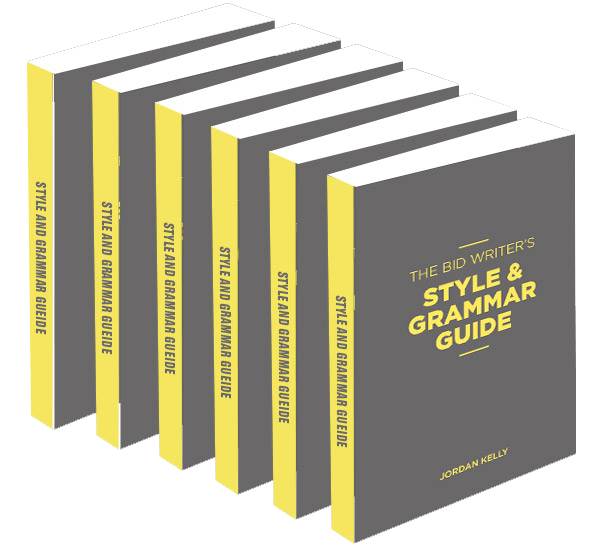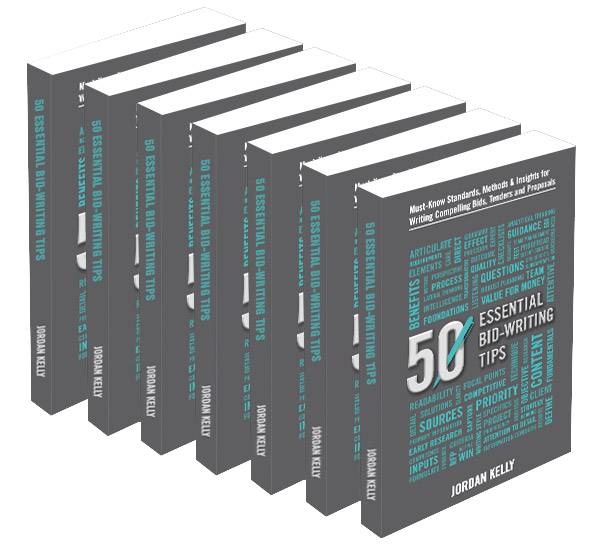CATEGORIES:

In the almost two decades I’ve been conducting pursuit leadership, bid strategy and bid writing consulting work, there are some basic issues that continue to show up across all industries’ submissions.
The following are some of the most common observations / recommendations I make when furnished with a cross-section of a new client’s (historic) submissions to provide commentary on:
- A bid is not a brochure.
Ironically, (what I call) “brochureware” copy is just as likely to flow from the keyboards of technical and other subject matter experts, as it is from marketing personnel.
Marketing and sales support personnel are prone to producing this type of “empty, generic and salesy” copy when they don’t have a solid, detailed and user-friendly bid strategy blueprint to inform and guide their content.
However, technical staff and subject specialists (engineers, for example) just as readily fall into the same trap – albeit they do it for a completely different reason: they’re under the impression that they are expected to produce marketing-style copy. (They’d do better to simply articulate their content in their normal fashion, even if this were more of a dry and academic style. At least there would be more chance of some real substance appearing in their written contributions.
- Each new bid is a process in its own right.
A bidder must view the preparation and production of each bid as having nothing to do with the last.
Each bid must be based upon its own unique strategy which, in turn, is formulated from dedicated research into the background of the project or contract being bid for and the prospective client. That makes templating and importing concepts and content from previous bids a nonsense.
- Start earlier to (a) go beyond face value, and (b) get a jump on the competition.
Becoming adept at satisfying the many unwritten and unspoken needs (including information/reassurance needs) of a prospective client necessitates the identification of those needs in the first place.
This listening between the lines, and deeper level of research, is rarely achieved when the bid strategy process isn’t commenced until the client’s Expression of Interest (EOI) or Request for Proposal (RFP) document is released.
- An Executive Summary is neither a covering letter nor a sales front-piece.
The Executive Summary is exactly that: a summary . . . a summary of the key themes of the overall submission, and a summary of the proposition itself.
With rare exception (or any), has any Executive Summary I’ve ever seen been both directly connected with and into the core content, and yet also functioned adequately as a stand-alone summary.
More often than not, they are a “We are pleased to submit our proposal for ETC / It is our pleasure to respond to ETC” unnecessary second covering letter, or an inappropriately self-promotional piece.
- (Fully) Customise Staff Profiles
Properly and diligently customise staff profiles and Curricula Vitae.
This is rarely done – or rarely done thoroughly.
Further, beware of superlatives and highly subjective language. All claims should be specific and measurable, and consistent with claims in the main body of your EOI or RFP response. (One submission I received wrote of two project delivery team members’ “50 years’ combined experience”.
When I reviewed their CVs and did the math, it turned out the true figure was little more than half of that.)
- Write – or at least edit – case studies to reflect their specific relevance to the procurement in question.
Leaving the evaluators to determine all points of relevance between your submitted case studies, and the product or service being sought by the prospective client, is a lazy approach – and it comes across that way, too.
Case studies can be a powerful supplement to a submission, and if you’re allowed their inclusion, you should maximise their impact by drawing every point of relevance with the client’s / customer’s project or procurement, and associated needs / concerns / priorities.
- Don’t undermine your submission with poor grammar, poor editing and typographical errors.
It would seem logical that, if a bidder is submitting a response for a project or a contract worth in the tens or hundreds of millions, the least investment they’d make would be the services of a good editor.
Yet, either they haven’t availed themselves of an editor, or that editor wasn’t particularly “good”.
50 ESSENTIAL BID-WRITING TIPS
Must-Know Standards, Methods & Insights for Writing Compelling Bids, Tenders and Proposals
(Book)
This 220-page, high-quality paperback production features 50 mini-lessons to ensure both your professional writers and your contributing subject matter experts produce client-centric, substance-based submission content.
Available individually or as a six-pack (6 for the price of 5).
THE BID WRITER'S STYLE & GRAMMAR GUIDE

(Book)
Your organisation’s credibility hangs on the quality of your writing and the standards it reflects.
Used diligently, this 196-page, high-quality paperback production will ensure the highest degree of grammatical diligence in your submissions, along with a consistent, professional writing style throughout.
Available individually or as a six-pack
(6 for the price of 5).



